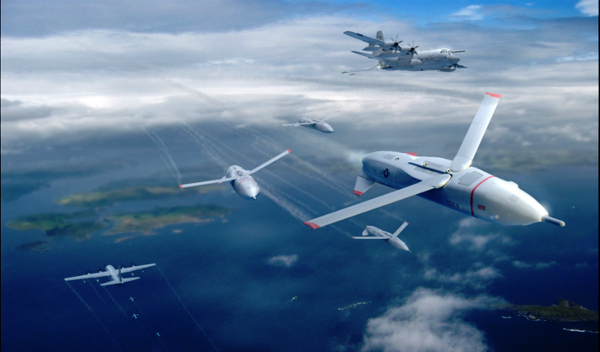In mid-2019, drone warfare reached a shocking milestone when Turkish and Chinese make drones were operated by the two opposing factions in Libya’s civil war to attack each other, largely substituting for combat fighter aircraft. The recent attack on ARAMCO oil refinery in Saudi Arabia itself is another worrying example of drone-based surprises in store. This surely is the dawn of a new era in Air operations.
In light of the recent drone attack in Saudi Arabia, the Indian Air Force (IAF) has initiated necessary action to counter this new form of threat to critical installations and security of the country.
The IAF Chief RKS Bhadauria has acknowledged that “The small drones are a new threat. It is a space violation issue and to deal with this, steps have been initiated.”
Evolution of Drones in India
The drones have become versatile multi-role platforms as they can be launched for various purposes from a hill, dessert or sea. Interestingly, despite lack of an unambiguous legal framework regarding their applications, drones and Artificial Intelligence are making steady progress in Military and Civilian applications, as if following a natural evolutionary process.
Since 1990’s era, the three Services have been a huge beneficiary of the specialised long-range imported drones for ISR (Intelligence, Surveillance, and Reconnaissance) missions. Defence Research and Development Organisation (DRDO) themselves have committed large resources in making drones like Rustom, AURA (Autonomous Unmanned Research Aircraft) over a decade.
In the opinion of Milind Kulshreshtha, C4I and Drone expert, “The Unmanned Combat Aerial Vehicles (UCAVs) are the future of Indian military as they have the capability of stealthily penetrating the enemy air space with an explosive payload and missiles. UCAVs with an advanced navigation/control feature combined with high optical day/night vision sensor capabilities is a lethal weapon against enemy targets in any offensive role. These can engage Air to Surface (land/water) or Air to Air targets. With their unprecedented reconnaissance capabilities and the ability to track a target for hours, drones have become the buzz word with all militaries. Similarly, in a defensive role, a swarm of weaponised drones can create an impenetrable screen against incoming targets, like a missile. Drones have a peace-time military role as a supply ‘mule’, for example, for quick delivery of replenishment material to troops bunkered in inaccessible positions in regions like North East. Further, the Police service has inducted drones mainly for Surveillance role.”
The already achieved potency in a combat drone is transforming the way warfare is being enabled today and shall continue to do so in the future. The impact of UCAVs shall not only be seen in the conventional warfare but, even more so, in asymmetric tactical response to the asymmetric threat of armed militant networks and other non-conventional targets. Drones have a huge advantage over the alternative of using soldiers or manned systems to engage the threat emanating out of terrorist sanctuaries, since such conventional actions may lead to undesired fall outs (in terms of operating costs, political consequences etc.), Kulshreshtha, the Drone expert explains.
Fighter Aircraft vs Aerial Drones
Soon, the Artificial Intelligence (AI) within the flying drone units and its Ground Control Station (GCS) shall provide enhanced Air Warfare capabilities like Target Identification/Target Designation, Target Tracking, optimum Attack manoeuvre and autonomous combat engagements etc. Technically, with some more advancement in drone avionics supported by AI, it is a matter of few decades that UCAVs may substitute fighter jets in some areas of Air Force operations.
According to Kulshreshtha, “As such, the era of ever speedier aircraft for a dog-fight to achieve air supremacy during a skirmish is slowly losing its sheen, with the focus shifting now towards making fighter jets less radar detectable (as targets), rather than attempting to out-run or out-manoeuvre supersonic SAMs or AAMs. In modern days, satellite-based surveillance systems act as a deterrent towards launching long-range aerial attacks against an advanced country (like China), which too can boast of Space-based early warning capabilities to activate its missile defences well in time.”
Overall, the Drone technology has evolved to a point of sophistication that their active role in combat activities cannot be ignored anymore. Apart from surveillance and reconnaissance operations, drones outfitted with precision-guided munitions are the game-changer in modern Air operations. In his view, the regulatory ambiguity regarding current drone usage is simply distracting technology focus from achieving the full potential of drones. Drone technology currently how-so-ever basic in possession of non-state actors is a cause of grave alarm. “The anti-drone technology is to be evolved by drone manufacturers themselves for their growth, and they need a Governmental impetus through R&D funding, to keep India ahead now and in the future drone centred Air operations,” he adds.
Source: FE
Image Courtesy: Business Insider
You may also like
-
IAF Aircraft Set Course For Exercise Eastern Bridge VII At Oman
-
IAF Set To Host The Indian Defence Aviation Exposition-II At Jodhpur
-
Defence Secretary to co-chair 5th India-Philippines Joint Defence Cooperation Committee meeting in Manila
-
Simultaneous Launch Of ‘malpe And Mulki’, Fourth And Fifth Ships Of Asw Swc (Csl) Project
-
Aatmanirbharta in Defence: MoD signs Contract with HAL for 240 AL-31FP Aero Engines for Su-30MKI Aircraft
